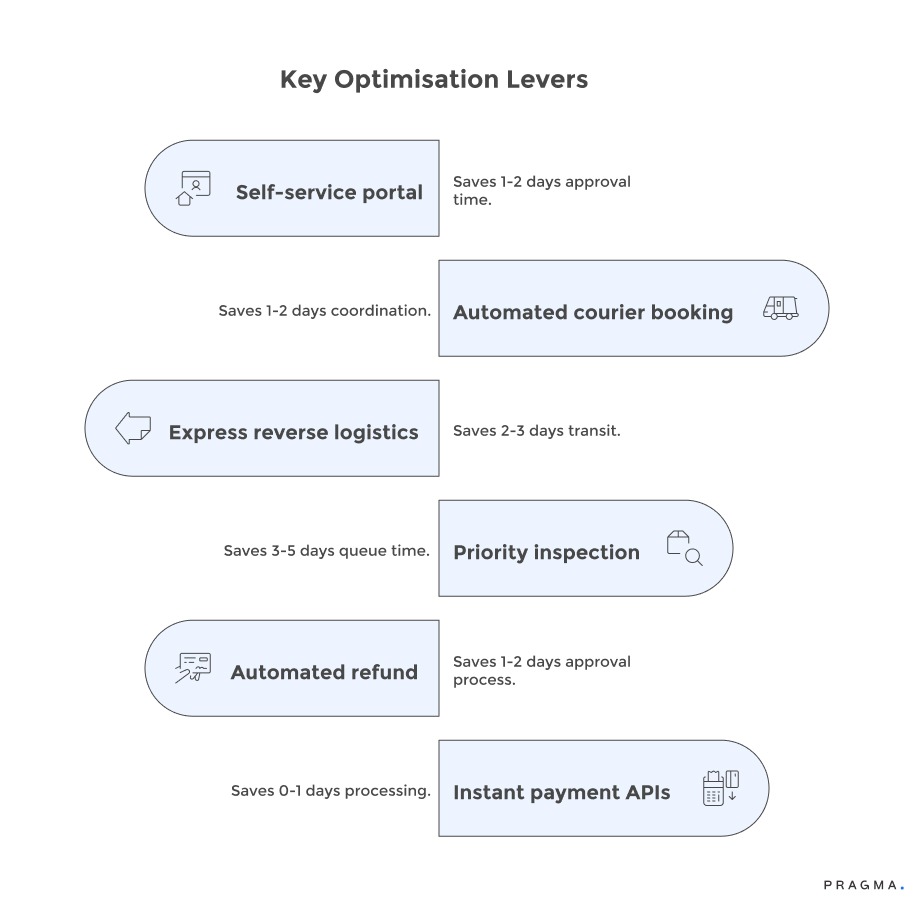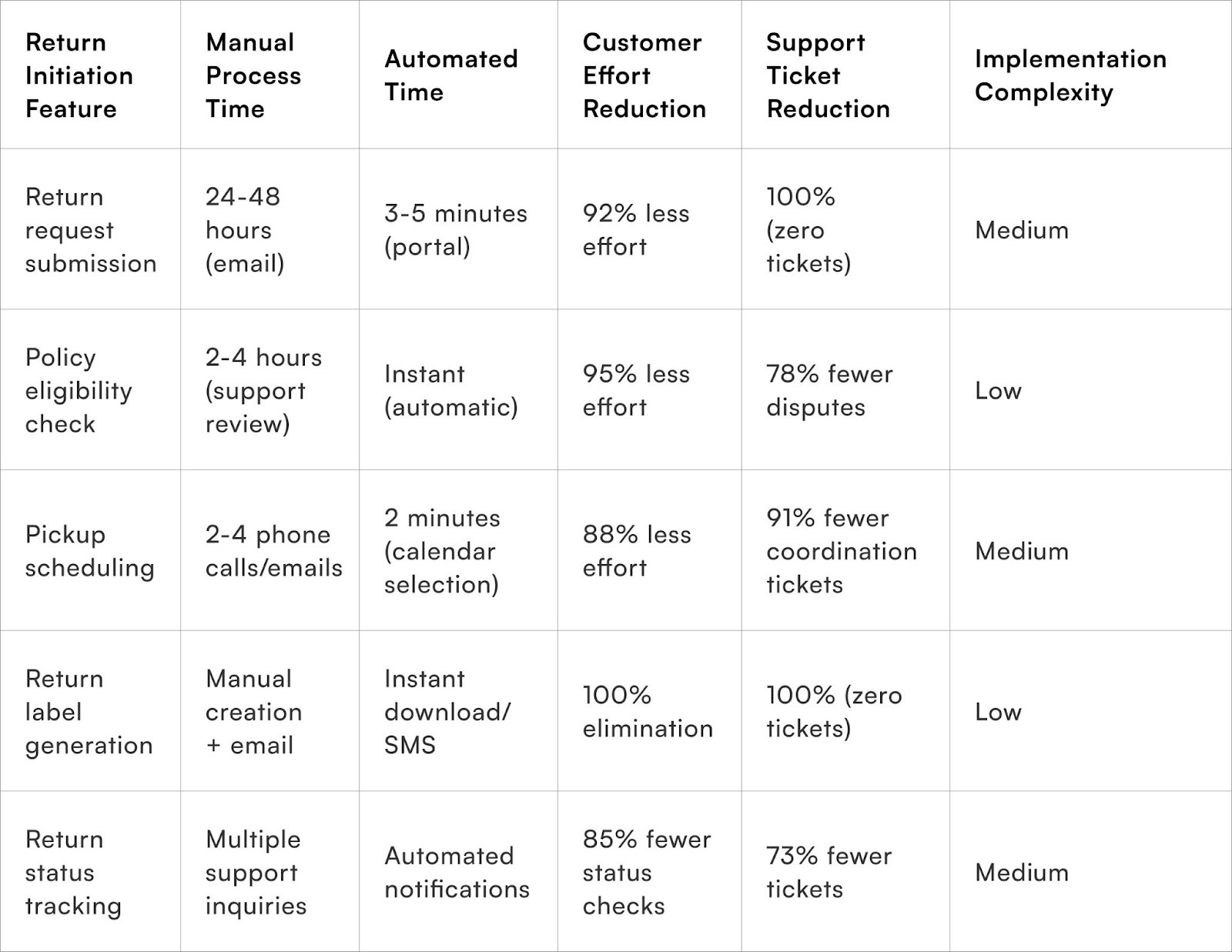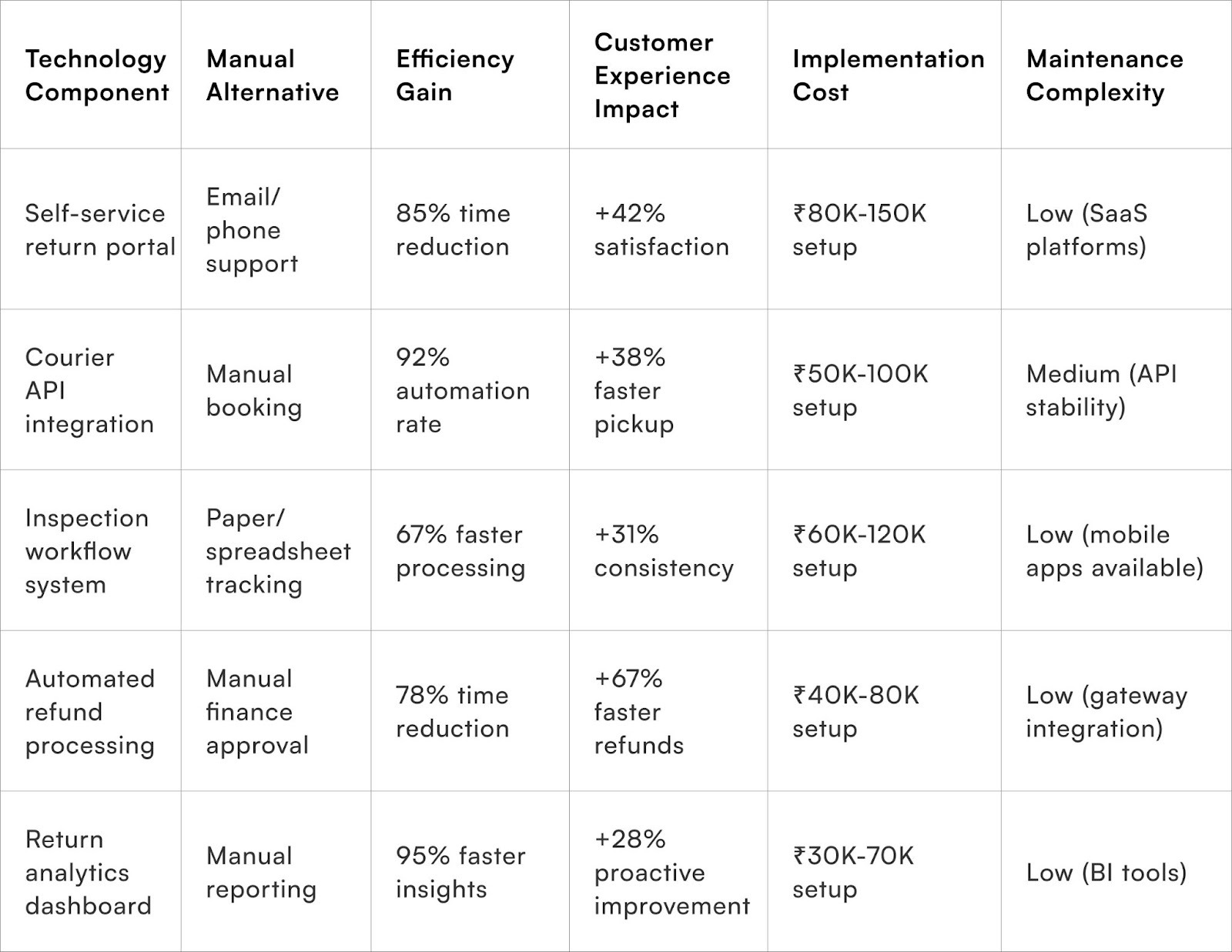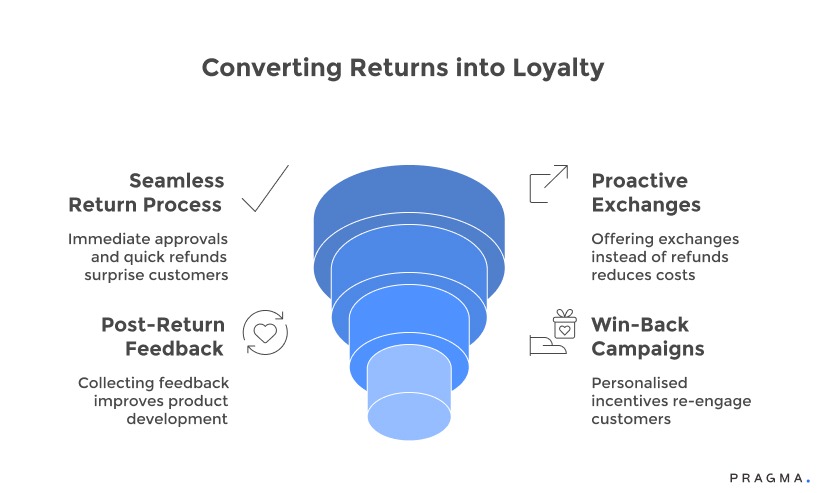Product returns aren’t just a post-purchase headache—they’re rapidly becoming the battleground where Indian e-commerce brands win or lose long-term loyalty. With India’s online retail sector expanding and customer expectations rising, seamless returns and faster refunds are now as important as order delivery itself. Every delayed pickup or sluggish refund risks turning a buyer into a critic, amplifying negative sentiment across social media and review platforms.
The scale of reverse logistics in India is staggering, with the market estimated to be worth billions and growing at over 7% annually on the back of robust e-commerce growth, evolving compliance standards, and a renewed emphasis on customer experience.
For modern D2C and marketplace brands, the challenge goes beyond simply handling products that come back—it’s about transforming the entire process, from collection and inspection to restocking and refund, into a well-oiled machine that delights buyers and boosts operational efficiency.
In this blog, we’ll break down actionable steps for Reverse Logistics in India: Best Practices for Faster Refunds and Happier Customers from establishing centralised return hubs and leveraging automation for instant refunds, to designing transparent, customer-facing status updates and partnering with logistics experts.
By embracing these strategies, brands can not only trim costs and reclaim lost inventory value, but also create an experience that turns a potential complaint into a moment of surprise and satisfaction—making reverse logistics a potent engine for customer happiness and repeat business.
Why do return processes take 3x longer than forward logistics?
Reverse logistics suffers from coordination gaps, manual interventions, and fragmented systems that forward shipping workflows solved years ago

Return initiation friction starts with unclear policies and cumbersome request processes forcing customers through email exchanges, form submissions, or phone calls that delay pickup scheduling by 24-72 hours.
Brands lacking self-service return portals require customers to email support, wait for approval responses, then coordinate pickup timing through multiple message exchanges. The manual coordination consumes 4-6 interactions over 2-3 days accomplishing what automated systems complete in 3-5 minutes through instant approvals and pickup scheduling.
Courier coordination for reverse pickups operates less efficiently than forward dispatch because returns represent lower priority, unpredictable volumes. Forward logistics involves daily scheduled pickups from brand warehouses at consistent volumes.
Reverse pickups scatter across thousands of customer addresses with sporadic single-unit requests that couriers struggle to route efficiently. The economics favour forward shipment density over reverse pickup fragmentation, creating service level disparities where forward delivery averages 3-5 days whilst reverse transit takes 6-9 days for equivalent distances.
Quality inspection bottlenecks emerge when returned products sit in receiving areas awaiting manual assessment rather than flowing through structured inspection workflows.
Warehouse teams prioritising forward fulfilment treat returns as secondary activities performed during spare capacity. Products arriving Monday might not receive inspection attention until Thursday or Friday when teams find time between order processing. The deprioritisation reflects organisational bias, viewing returns as cost centres rather than customer experience touchpoints requiring equal attention to forward operations.
Refund processing delays compound transit and inspection timing through manual finance approval workflows, payment gateway processing windows, and banking settlement cycles.

Even after quality inspection approves refunds, manual finance team sign-offs add 24-48 hours, payment gateway API calls might batch overnight, and bank transfers take 2-5 business days depending on customer bank and payment method. The sequential delays accumulate into week-plus timelines between return approval and funds appearing in customer accounts.
What self-service capabilities reduce return initiation friction?
Automated return portals eliminate email back-and-forth whilst providing instant confirmation and pickup scheduling
Order History Dashboards:
Accessible through customer accounts, these dashboards enable instant return initiation without contacting support. Customers log in, view order history, select items for return, choose a return reason from a dropdown, upload product condition photos, and receive immediate return approval with a shipping label—all within 3-5 minutes. This self-service flow eliminates the 24-48 hour delay awaiting support responses whilst capturing structured return reason data for analysis rather than unstructured email text.
Automated Eligibility Validation:
This prevents policy disputes by checking the return window, product category restrictions, and customer history before allowing return submission. The system automatically validates that the order falls within the 15-day return period, the product isn't marked non-returnable, and the customer hasn't exceeded return rate thresholds.
Instant feedback—"This order is outside the return window" or "Return approved, pick-up scheduled"—provides clarity without support intervention whilst preventing ineligible return requests from entering the workflow.
Integrated Pick-up Scheduling:
Within the return flow, this enables customers to select convenient time slots rather than waiting for courier contact. The return portal displays next-day pick-up slots—morning (9 AM-1 PM), afternoon (2 PM-6 PM), evening (6 PM-9 PM)—allowing customers to choose availability.
Automated courier API booking confirms pick-up without manual coordination, sending customers a confirmation SMS with pick-up details. Seamless scheduling reduces coordination friction whilst ensuring customers prepare products for pick-up at expected times.
Return Tracking Visibility:
Throughout the reverse logistics journey, this reduces anxiety-driven support queries. Customers receive automated updates:
- "Pick-up scheduled for tomorrow 2-6 PM,"
- "Product picked up, in transit to warehouse,"
- "Product received, quality check in progress,"
- "Quality check complete, refund initiated,"
- "Refund processed, expect funds in 2-3 days."
This proactive communication transforms uncertain waiting into managed expectations, decreasing "where's my refund?" tickets by 67-73%.

How can express reverse logistics compress transit timelines?
Dedicated return shipping networks and priority routing reduce reverse transit from 6-9 days to 3-4 days
Express reverse pickup services from specialised reverse logistics providers like Clickpost, Shiprocket, or Delhivery Returns prioritise return transit through dedicated routing rather than treating returns as secondary to forward volumes.
These services schedule guaranteed next-day pickups, utilise direct warehouse routes bypassing hub consolidation, and provide 3-4 day delivery commitments versus 6-9 day standard reverse logistics. The premium cost of ₹45-65 versus ₹35-50 standard reverse shipping justifies itself through improved customer satisfaction and reduced support costs.
Regional return hubs positioned in major metros enable faster reverse transit by reducing average travel distance.
Brands establishing return processing centres in Mumbai, Delhi, Bangalore, and Kolkata reduce national average reverse transit from 7-8 days to 4-5 days by positioning receiving within 500-800km of most customers. The hub strategy requires inventory management complexity but dramatically improves return experience whilst enabling regional quality inspection teams processing returns in parallel.
Courier performance accountability through SLA tracking and vendor scorecards incentivises reverse logistics prioritisation. Brands monitoring reverse pickup success rates, transit times, and delivery completion hold couriers accountable for return performance equal to forward metrics. Monthly reviews highlighting reverse logistics gaps with financial incentives for improvement drive courier behavior change treating returns as important revenue-generating relationships rather than inconvenient value-destroyers.
Customer communication during transit reduces anxiety through proactive status updates. Automated notifications triggered by courier tracking events—pickup confirmed, in transit, reached warehouse—provide visibility reassuring customers their returns progress toward resolution.
The transparency particularly matters for high-value returns where customers worry about product loss or damage during reverse transit affecting refund eligibility.
How do refund method choices affect customer satisfaction?
Payment method matching, instant refunds, and transparent timelines shape customer perception of return experience
Expediting Refunds: Strategies for Customer Satisfaction
Seamless refund experiences are crucial for customer satisfaction, though banking system delays can pose challenges. Refund timelines vary significantly based on the original payment method:
- Credit Cards: 5-7 business days
- Debit Cards: 3-5 business days
- UPI/Wallets: 2-3 business days
- Cash on Delivery (COD) via NEFT/IMPS: 5-8 business days
These variations, often beyond a brand's control, can lead to customer frustration despite prompt refund initiation.
Instant Refund Solutions:
Offering instant refund options, such as store credit or gift vouchers, bypasses banking delays and provides immediate resolution. When given a choice like "Bank refund in 5-7 days or instant ₹1,200 store credit," 42-48% of repeat customers opt for store credit.
This approach retains revenue for brands while satisfying customers who prioritise speed. It's vital to ensure store credit is an optional choice to prevent customer resentment.
Transparent Communication:
Clear and consistent communication about refund timelines is essential to manage customer expectations and prevent dissatisfaction. Instead of vague statements like
"refund will be processed soon,"
specific messaging during return approval, such as
"Refund will be processed to your credit card within 5-7 business days after quality check,"
sets accurate expectations. Automated email notifications at each stage of the refund process ("Refund initiated," "Refund processed by our team," "Refund complete") provide clarity and reduce support inquiries.
Proactive Delay Management:
Demonstrating customer care by proactively communicating any refund delays builds trust. If quality inspection or other issues extend beyond the committed timeline, automated alerts should inform customers:
"Your return is taking longer than expected due to the inspection queue.
We'll complete the review by Friday and process your refund immediately." This transparency acknowledges delays, provides updated expectations, and maintains trust, whereas silence can breed suspicion.
What technology infrastructure enables seamless reverse logistics?
System integration connecting return portals, courier APIs, inspection tools, and payment gateways eliminates manual handoffs
1. Unified Return Management Systems:
Centralised platforms streamline the entire return process. These systems consolidate return requests, co-ordinate with couriers, track quality inspections, and process refunds. By integrating all steps of the reverse workflow, they eliminate the need for fragmented tools and prevent data disconnects.
This unified view empowers operations teams to monitor the complete return journey, from initial request to final refund, without switching platforms or manual data transfers. Examples include AfterShip Returns and Loop Returns, or custom-built solutions.
2. Automated Courier API Integrations:
Real-time API connections with courier partners automate crucial tasks. This includes programmatic pickup slot booking, instant shipping label creation, and automated tracking status updates every 4-6 hours.
This automation removes manual booking and status checking, reducing co-ordination overhead and ensuring accurate tracking information flows seamlessly to customer-facing systems, preventing delays and errors.
3. Automated Payment Gateway API Integration:
Direct connections to payment gateway APIs, such as Razorpay, PayU, or Paytm, enable automated refund processing. Systems can trigger refunds programmatically upon approval of quality inspections, eliminating 1-2 day manual processing delays. This ensures accurate refund amounts match original transactions. Error handling protocols manage gateway failures through automatic retries and alert escalation when manual intervention becomes necessary.
4. Advanced Analytics and Reporting Infrastructure:
Robust analytics and reporting tools provide crucial data visibility into return patterns, process bottlenecks, and opportunities for improvement. Dashboards can track return rates by product, return reasons by category, cycle time by process stage, and refund timeline distributions.
This measurement visibility drives continuous, systematic optimisation, which is impossible when return data remains siloed in disconnected operational systems without consolidated reporting.

How can brands turn returns into retention opportunities?
Strategic return experiences build loyalty rather than losing customers through operational excellence and relationship investment
Optimising Reverse Logistics for Enhanced Customer Loyalty and Profitability
Transforming Returns into Loyalty:
A seamless return experience can convert a dissatisfied customer into a loyal brand advocate. Customers who anticipate a difficult return process but instead encounter immediate approvals, prompt pickups, and quick refunds are pleasantly surprised, fostering disproportionate loyalty.
Research indicates that customers with excellent return experiences exhibit 34-41% higher repeat purchase rates, while poor experiences lead to 67-73% churn rates. The return moment is a pivotal point, determining continued patronage or permanent customer loss.

Proactive Exchanges to Reduce Refund Costs:
Offering proactive exchange options during return initiation can significantly reduce refund costs while preserving customer relationships.
For instance, return portals detecting size or fit-related returns can suggest:
- "Would you prefer exchanging for a different size instead?
- Enjoy free shipping both ways and continue shopping!"
This approach converts 31-38% of size-related returns into replacement orders, safeguarding revenue while effectively resolving customer issues. It is crucial to position exchanges as a convenient customer choice rather than a mandatory brand preference.
Leveraging Post-Return Feedback for Product Improvement:
Collecting post-return feedback provides valuable insights for product development and demonstrates that customer opinions are valued. Brief surveys completed after a return, asking
"What made you return this product?" with analysis-friendly dropdown options (e.g., sizing issues, quality concerns, color mismatch, changed mind), capture structured data. Including free-text fields allows for deeper insights, assuring customers that their feedback drives tangible improvements, which can be communicated in follow-up messages.
Win-Back Campaigns to Re-engage Return Customers:
Targeting return customers with personalised incentives through win-back campaigns can effectively repair relationships strained by negative experiences. Customers who complete returns can receive post-refund emails 7-10 days later, such as:
"Sorry [product] didn't work out. Here's ₹150 off your next purchase to try something else."
This gesture acknowledges disappointment and demonstrates a commitment to customer satisfaction. Testing reveals that win-back offers achieve 23-29% redemption rates, with redeemed customers showing 78-84% satisfaction compared to their original purchase, effectively resetting relationships through a positive recovery experience.
Quick Wins
Week 1: Current Process Documentation and Bottleneck Identification
Map complete return journey from request initiation through refund completion documenting every step, handoff, and approval gate. Time each process stage using the last 50 returns: request-to-approval duration
- approval-to-pickup time
- pickup-to-warehouse transit
- warehouse-to-inspection queue
- Inspection-to-refund
- refund-to-settlement.
Identify longest delays and most frequent bottlenecks. Survey customers about return experience pain points. Calculate current return cycle time average and distribution.
Expected outcome: Clear understanding of where delays occur with quantified impact showing which improvements deliver maximum cycle time reduction.
Week 2: Self-Service Portal Implementation
Deploy basic return request portal enabling customers to initiate returns without emailing support.
Start with a minimal viable product: login to view orders, select return items, choose reason from dropdown, submit request for automated approval (based on policy rules: within window, eligible products, no abuse flags). The system generates return shipping labels sent via email. Integrate basic courier API for pickup scheduling if feasible, otherwise maintain manual booking temporarily.
Expected outcome: 80-90% return requests processed through portal eliminating email-based manual workflows, reducing request-to-approval time from 24-48 hours to 5-15 minutes.
Week 3: Quality Inspection Workflow Standardisation
Create structured inspection checklists for major product categories with clear pass/fail criteria and photographic documentation requirements. Train warehouse team on new protocols emphasising return inspection priority equal to forward fulfilment. Establish dedicated inspection time slots twice daily (morning and afternoon) rather than ad-hoc processing. Implement simple Google Sheets or Airtable system tracking returns through inspection stages with photo uploads. Set 24-hour inspection completion target from warehouse receipt.
Expected outcome: Inspection bottleneck reduced from 3-5 days queue time to same-day or next-day processing, with consistent quality standards across team members.
Week 4: Refund Automation and Communication Enhancement
Set up automated refund triggering integrated with payment gateway for standard approved returns eliminating manual finance review. Implement automated customer
communication at key milestones: return approved, pickup scheduled, product received, inspection complete, refund initiated, refund processed. Create email/SMS templates for each stage with realistic timeline expectations. For returns requiring manual review, implement a 48-hour maximum approval commitment.
Expected outcome: Refund processing time reduced from 2-4 days post-inspection to same-day initiation, with proactive customer communication reducing status inquiry tickets by 60-70%.
To Wrap It Up
Reverse logistics excellence separates brands that lose customers through returns from those that build loyalty during problem resolution. The operational investment in fast, transparent, hassle-free returns pays returns far exceeding costs through improved retention, positive word-of-mouth, and competitive differentiation in markets where most brands treat returns as necessary evils rather than experience opportunities. Speed, communication, and ease distinguish leaders from laggards in reverse logistics performance.
Time your next 20 returns end-to-end documenting delays at each handoff, then eliminate your single longest bottleneck this week through either automation, process change, or dedicated resource allocation.
Sustained reverse logistics performance requires treating returns as core operations deserving equal investment to forward fulfilment rather than afterthought processes managed through spare capacity.
Brands establishing dedicated return teams, measuring cycle time metrics daily, and continuously optimising based on customer feedback achieve 28-35% better return experience ratings in year two through systematic improvement compounding into operational advantages that return-neglectful competitors cannot replicate.
The excellence in handling things going wrong often builds stronger customer relationships than flawless initial transactions ever could.
For D2C brands seeking to transform reverse logistics from customer frustration into loyalty-building experiences, Pragma's return management platform provides self-service portals, automated courier coordination, quality inspection workflows, and instant refund processing that help brands achieve 4-7 day return cycles whilst reducing return-related support tickets by 70%+ through systematic optimisation treating returns as strategic customer touchpoints.

FAQs (Frequently Asked Questions On Carrier Partner Data: What D2C Brands Miss When Analysing Performance Reports)
1. Should we offer free return shipping or charge customers?
Free returns increase return rates by 12-18% but also improve conversion by 8-14% through reduced purchase risk. Most D2C brands benefit from free returns despite cost, using it as competitive advantage. Consider hybrid: free returns for exchanges or store credit, ₹50-75 charge for refunds. This encourages exchanges over refunds whilst maintaining customer-friendly policy.
2. How do we prevent return fraud without harming legitimate customers?
Use risk-based inspection—detailed checks for high-value returns or customers with unusual patterns, quick approval for low-risk cases. Track return rates per customer flagging >40% return rates for review. Photograph all returned items documenting condition. Most brands find <5% fraud rate doesn't justify aggressive policies alienating 95% legitimate returners.
3. What's a reasonable return cycle time to promise customers?
Promise 7-10 days for complete cycle (pickup to refund) whilst internally targeting 5-7 days. The buffer prevents broken promises during delays whilst enabling positive surprise when completing faster. Never promise timelines you can't consistently meet—better to under-promise and over-deliver than reverse.
4. Should quality inspection happen at customer location or warehouse?
Warehouse inspection works for most D2C brands. At-location inspection suits high-value categories (jewellery, electronics >₹50K) where return shipping risks don't justify efficiency. Implementation complexity and courier training requirements make warehouse inspection optimal for 95% of returns.
5. How do we handle returns for non-returnable products?
returnable items during purchase (intimate wear, perishables, custom products). Make exceptions for damaged/defective cases. When customers dispute policies, consider goodwill refunds for first-time cases—₹800 refund costs less than negative reviews. Balance policy enforcement with customer relationship value.
Talk to our experts for a customised solution that can maximise your sales funnel
Book a demo

.png)


.png)